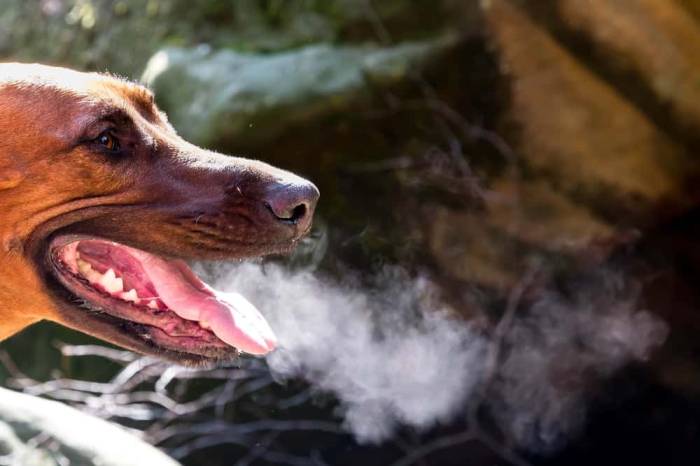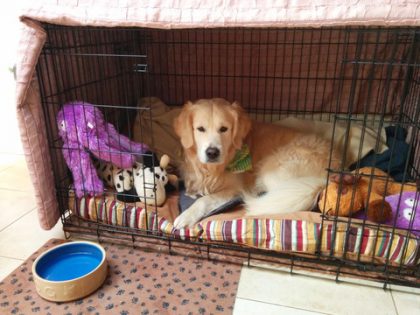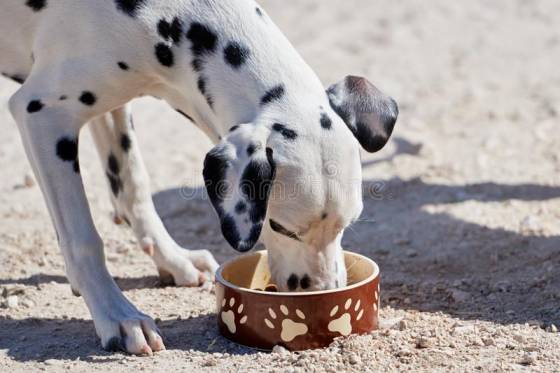When dogs are so active and running around, as well as play fighting with their furry friends, it is easy for them to pick up scrapes and cuts. But what happens when your dog suffers a more serious open wound? What if they have puncture wounds from another dog? The last thing anybody wants is for their dog to be injured. But it is important to take the appropriate action so they are not in pain and so the wound can heal. So, let’s take a look at how you can treat minor open wounds at home and when it is better to arrange an appointment at the vets.
Connect with a verified veterinarian in minutes. Licensed vets are available 24/7 to answer your questions. No need to worry about your furry family member.
Can I Treat My Dog’s Wound at Home?
If your dog has injured themselves on a walk or during play, it is possible to treat the wound at home without going to the veterinarian. Just make sure that you feel confident cleaning the wound and controlling your dog at the same time. Ask for help from a friend or family member in order to clean the wound. It is essential that you clean your dog’s wounds as soon as possible. This is going to lower the risk of infection starting. In addition, only clean the wound at home if it is minor and small in size. If you think that it will heal with minimal medication, then you can clean it and this should be enough to avoid infection and encourage the natural healing process.
However, if the wound is very open and large, it is best to take your dog straight to the veterinarian. In addition, if the wound is in an awkward place to treat, this is another sign it is best to get help from a professional. You do not want to take risks if the wound is serious. It could get infected and worse if you try to treat it without the right expertise and medication.
Arrange an emergency appointment and take your pooch straight there. You will be glad that you did later on
How Can I Clean My Dog’s Wound at Home?
Do not try to clean your dog’s open wounds with anything you have in your medicine cabinet that you think might work. While this may work on humans, it could be toxic or damaging to canines. You do not want to make things worse. Some of the products you should avoid applying to your dog’s wounds include:
- Soaps
- Shampoos
- Tea tree oil
- Rubbing alcohol
- Hydrogen peroxide
- Herbal remedies
- Antiseptic products or creams
If you feel that you really need to clean the wound because it is in a bad state, you should use warm water. This can have a soothing effect. In addition, you could try to clean the wound with a warm saline solution. This is created by adding around one teaspoon of salt to two cups of warm water. You can also use Epsom salts. Salt has antibacterial properties that can make it good for cleaning open wounds. There are studies that suggest it can kill bacteria. You also want to try to remove any dirt or debris that you can see in the wound. You may also be able to use chlorhexidine to clean around the wound. This is readily available in stores or you might have it in your home. A 2 percent solution is better to avoid any irritation. This cleaning solution can help to kill any bacteria that is present. If you are unsure about the medication you have, do not use it. Instead, opt for warm water and salt.
Always remember that your four-legged friend will be in pain. This means that touching around the wound will hurt. While some dogs will let you touch the wounds, others will be scared and in pain. This can make it difficult to clean the wound. While your dog is your beloved companion, they can try to bite if they do not want you to touch it. In particular, salt water can sting on a wound and it is best to take it slowly and monitor your dog’s reaction. In cases where you need to clean the open wound at home, it might be best for your dog to lie down and someone to hold their head. This can allow you to clean the wound and to avoid any accidents from occurring. If you have a muzzle, you can be safe and use it while you are cleaning the wound.

Review symptoms, medications & behavior to keep your pets healthy with a Vet Online in just minutes.
Ask a Vet Live NowCan I Give My Dog Pain Medication?
There is unlikely to be any pain medication in your home that is suitable for your beloved companion. Again, it is best to avoid anything for humans as medications can be toxic for pooches. You can always try to make your pup comfortable in other ways. For example, fill their bed with comfortable blankets that are warm and soft. Give them plenty of attention and maybe a few treats.
If your dog is in pain, your veterinarian will prescribe the appropriate medication to make them feel better. The drugs can lessen the discomfort they are feeling until the wound starts to heal. Likely, this medication will be non-steroidal anti-inflammatory drugs. This could include Metacam, Deramaxx or Rimadyl. It is important to only use the medication that is prescribed by your veterinarian and not try to treat your pooch by yourself. If a vet prescribes pain medication or antibiotics, always make sure that you finish the prescription. This means administering all of the doses until they are done or until your vet says otherwise.
What If My Dog is Trying to Lick Their Wound?
For many years, there has been a rumor that dog owners believe. This is that the saliva of a dog has antiseptic features. Unfortunately, this is not true. Otherwise, it would make things a lot easier! In fact, it is quite the opposite and your dog’s tongue can harbor a lot of germs. This means that you should not let your furry friend lick their wounds. This can actually do more harm than good. Allowing your dog to lick their wounds means that it can become infected and this is going to delay the healing process and may cause other complications.
In order to stop your dog licking their wounds, your pup may have to wear an Elizabethan collar. This is commonly known as the cone of shame. While your pooch may not like wearing it, it will stop them infecting their wounds for a while. But it will depend on the location of the wound what is going to work best. For example, your dog could wear a jumper or a sock, depending on where the wound is.
What are the Signs That a Wound is Healing?
It should be quite apparent that a wound on your dog is healing. The redness and inflamed look should start to decrease, with it looking a lot healthier. Any swelling should be diminishing and after a few days, new skin should start appearing. These are all good signs and show that the wound is not infected and it should be gone soon.
It can take several days to a week for a wound to disappear. This will depend on the size, location and severity of the wound. Make sure that you keep an eye on it so that you know it is getting better. If you have any doubts about the wound, do not hesitate to contact your veterinarian.
How Do I Know If the Open Wound Has Become Infected?
Despite your best intentions, the open wound may become infected without you realizing it. The signs to look out for include a red and swollen appearance that seems to be getting worse. In addition, you might notice a yellow, bloody or green discharge coming from the wound. If this happens for several days, you should contact your veterinarian.
When Should I Have an Open Wound Treated at the Vets?
There are some dog owners who would prefer to take their pooch to the veterinarian straight away. Of course, this is a good option if you do not feel confident treating the open wound by yourself. In addition, it is going to be the best option if it is a large open wound or on an awkward place on the body. It is important never to take risks. While a trip to the vet can be expensive, an expert always knows the best thing to do for the wellbeing of your pup.
When there is a big open would, it may be necessary for a vet to close and suture it. This can help to speed up healing and prevent infection. But if there is already an infection, it will be left open so that it can be treated or drained first. If there is any large debris or foreign material inside the open wound, a vet might have to anesthetize your pooch so that they can be safely removed without any pain. If the wound does not have to be sutured, a bandage may be required.
How Do I Care for a Wound After a Trip to the Vets?
There will be some aftercare involved for an open wound once you are back from the vets. Ultimately, they are going to instruct you on what you should do and how you can care for the wound. But we will tell you some things that you can expect. If your dog is wearing dressing or a bandage, this will need to be changed regularly. This can be as often as every day. This is going to help the wound heal and avoid infection.
In addition, you will probably have to clean the wound to ensure that it is healing correctly and to stop any bacterial from getting into the wound while it is still open
If you notice that there is drainage from the wound, this is not necessarily a bad thing. If the discharge is clear and it does not have a smell, allow the liquid to drain and clean the wound. This can be part of the healing process. But if there is an odor and it is bloody, green or yellow in color, this can indicate an infection and you should inform your vet. It is important to take a look at the wound every day to ensure healing is happening. You should be able to see visible differences in the wound, such as inflammation and swelling diminishing.
To Summarize
All dogs will suffer from scrapes and scratches at some point in their lives. It is all part of being a pup, whether they are running around the forest or playing with their best friend. Most of the time, you will be able to treat minor wounds at home without expert help. It will be a case of cleaning the wound so that it does not become infected and allowing the natural healing process to take over. Just remember that if you are cleaning a wound at home, avoid applying any human products. While it may work for you, you do not know if it will be suitable for animals. It is best to stick to warm water and salt or a 2 percent chlorhexidine solution for cleaning wounds. Always check the wound for early signs of infection.
If the wound is large and open, contact your vet for an emergency appointment. Your dog will be in pain and this can affect their mood. The vet will be able to give them pain medication and clean the wound correctly. They may have to suture the open wound or apply bandages. You will be in charge of the aftercare after a trip to the vets. Always keep an eye out for signs of an infection. Remember, this is inflammation, swelling and redness, as well as a green, bloody or yellow discharge with an odor. If there are any signs of infection, make sure that you contact your vet as soon as possible.
Connect with a verified veterinarian in minutes. Licensed vets are available 24/7 to answer your questions. No need to worry about your furry family member.

Kim
Kim is a talented author, who loves animals especially dogs. She engaged in writing books and articles relating to animals a decade ago. Kim resides in Chicago with her husband and son. The family is the proud owner of a dog and a parrot (Jack and Lily). Kim wanted more than these two pets, but her husband put his foot down... She often visits elementary schools to talk to the kids about what she learned about pets and how they could learn from them.
Review symptoms, medications & behavior to keep your pets healthy with a Vet Online in just minutes.
Ask a Vet Live Now



